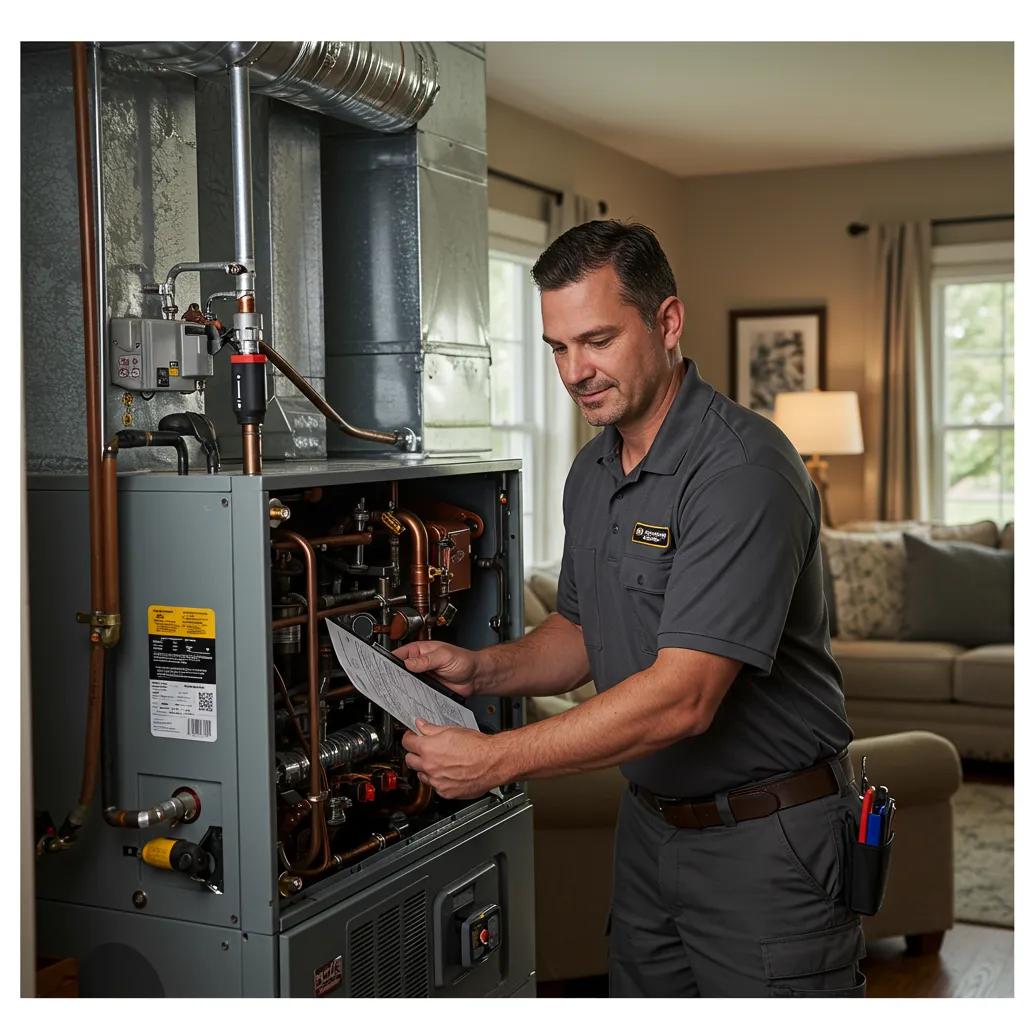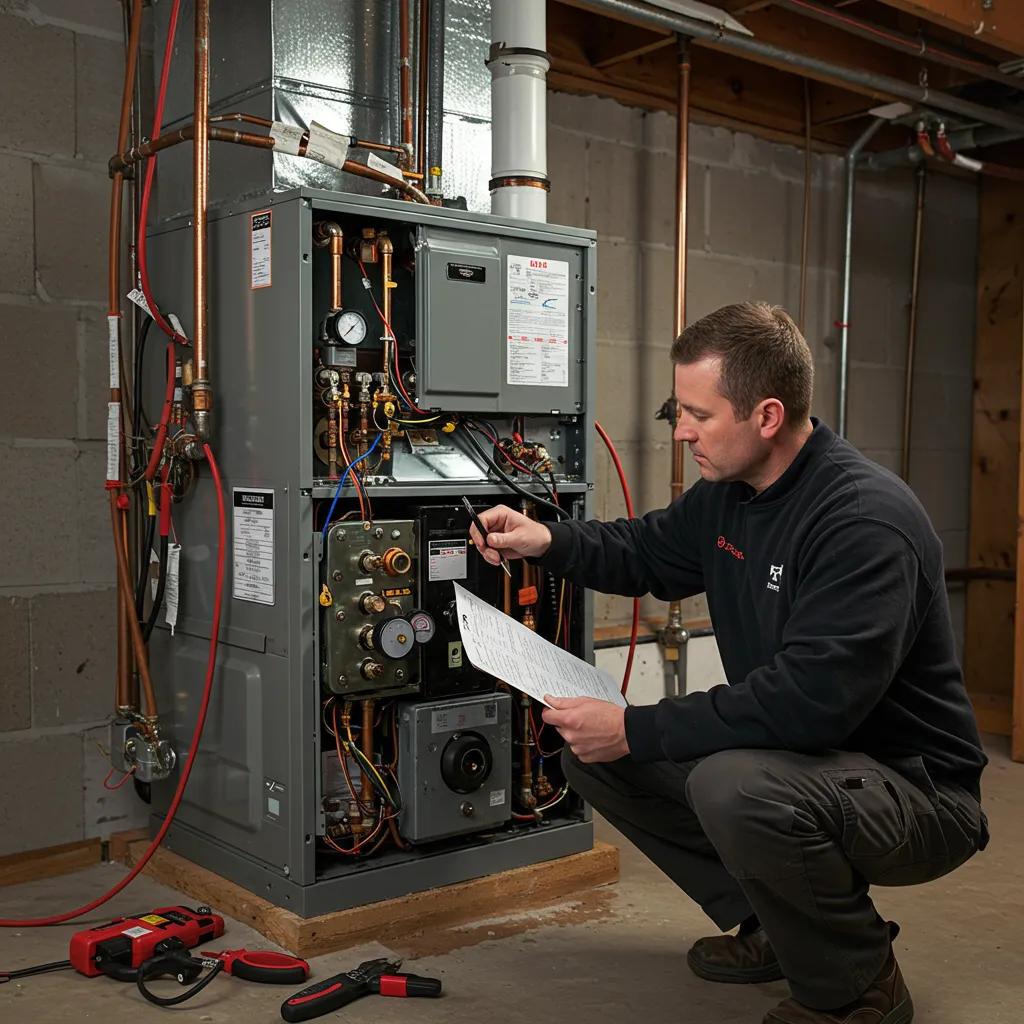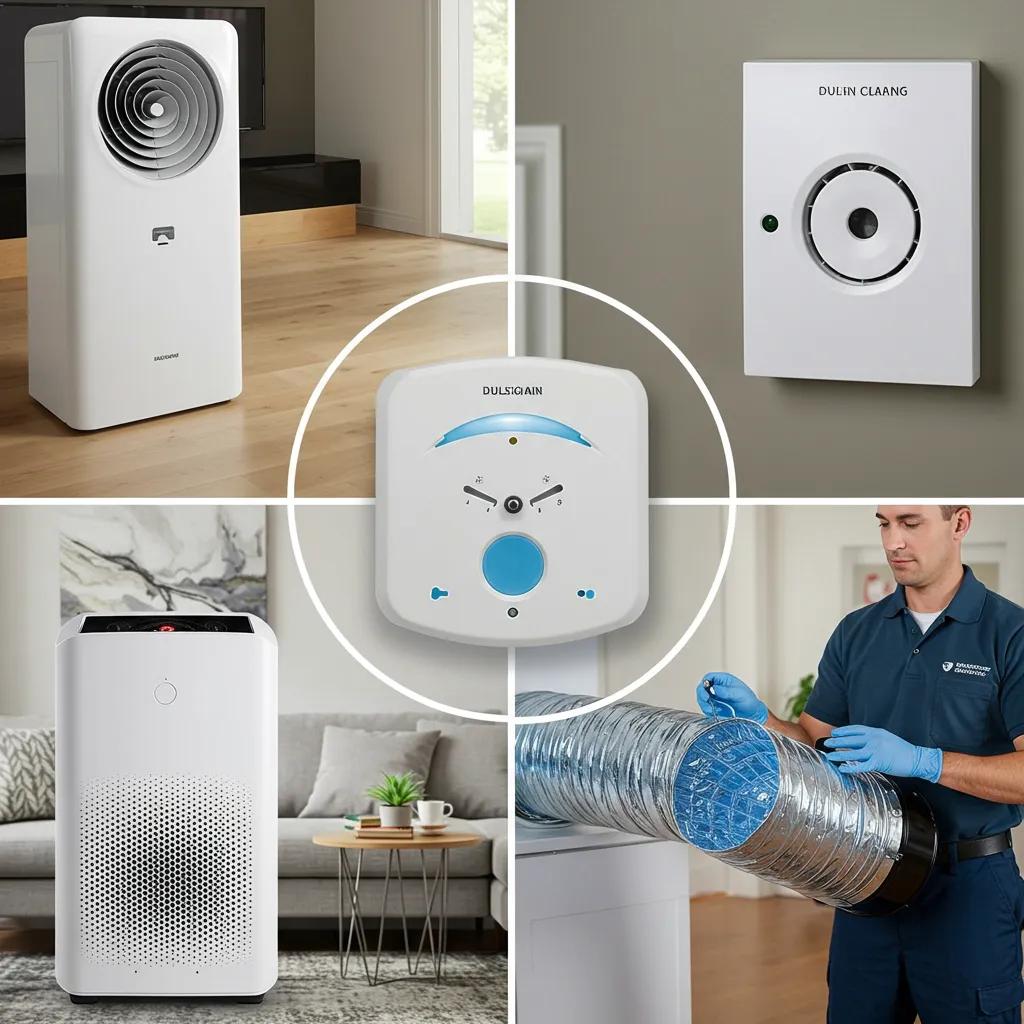
HVAC Maintenance and Repair for Northwest Indiana Homeowners
Is unpredictable heating bills and uneven cooling keeping you up at night in Porter or Lake County? Professional HVAC maintenance and repair not only restores indoor comfort but also prolongs equipment life, reduces energy expenses and safeguards your family’s well-being. This Furnace Exchange blog article reveals how scheduled tune-ups, expert diagnostics and targeted upgrades deliver reliable performance all year round. We will explore:
- How preventive service maximises system longevity and energy efficiency
- Common furnace faults in Lake County and proven repair fixes
- AC service essentials in Porter County for peak summer comfort
- Indoor air quality solutions tailored to local allergens and humidity
- Efficiency tips—from smart thermostats to ENERGY STAR upgrades
- Selecting a trustworthy Northwest Indiana HVAC contractor
- Emerging industry trends, rebates and regulatory updates
By the end, you will understand each step in maintaining, troubleshooting and upgrading your heating and cooling systems—plus how Furnace Exchange’s certified technicians deliver free estimates, flexible financing and emergency response whenever you need it.
How Can Homeowners Benefit from Professional HVAC Maintenance in Northwest Indiana?
Regular HVAC maintenance is a proactive service that inspects, cleans and adjusts heating and cooling components to ensure consistent performance, safety and energy savings. By entrusting preventive tune-ups to certified technicians, homeowners avoid unexpected breakdowns, enjoy lower utility bills and extend the lifespan of furnaces and air conditioners.
Preventive maintenance establishes a baseline for system health, detects minor issues before they escalate and reinforces indoor air quality. This approach builds on local climate considerations—like cold winters and humid summers—so each inspection adapts to seasonal demands and optimises your home comfort.
What Are the Key Components of HVAC System Maintenance?
A comprehensive service visit covers multiple critical elements to keep systems running smoothly and efficiently.
Before detailing specific tasks, here is an overview of core maintenance activities:
- Filter Replacement and Inspection – Ensures unrestricted airflow and captures dust and allergens.
- Thermostat Calibration – Verifies accurate temperature sensing for precise climate control.
- Blower Motor Lubrication – Reduces friction, noise and wear on moving parts.
- Heat Exchanger and Duct Examination – Detects cracks or leaks that could compromise safety or efficiency.
- Evaporator and Condenser Coil Cleaning – Restores heat transfer capacity and peak cooling output.
- Refrigerant Level and Leak Check – Confirms proper refrigerant charge for cooling performance.
- Electrical Component Testing – Verifies wiring, capacitors and safety switches for reliable operation.
By addressing these items, technicians maintain airflow balance, prevent system strain and lay the groundwork for safe, efficient heating and cooling year after year.
How Often Should Furnaces and Air Conditioners Be Serviced?
A furnace and air conditioner each require annual professional service to preserve peak performance and safety. Ideally, schedule a furnacetune-up in autumn before heating demand rises, and an AC inspection in spring before the hottest months begin. Consistent scheduling prevents neglected wear, maximises energy savings and avoids mid-season breakdowns.
What Energy Efficiency Improvements Result from Regular HVAC Maintenance?
Consistent maintenance improves energy efficiency by restoring optimal heat transfer and airflow. Homes receiving annual tune-ups can reduce utility bills by up to 20 percent through clean coils, correctly charged refrigerant and properly adjusted controls. Improved efficiency also yields quieter operation, reduced carbon emissions and enhanced equipment longevity, reinforcing both cost savings and environmental stewardship.
Benefits of Regular HVACMaintenance for Energy Efficiency
Regular HVAC maintenance, including cleaning filters and coils, can significantly reduce energy consumption and extend the lifespan of heating and cooling systems. Studies indicate that well-maintained systems can lower energy bills by up to 30% and prevent costly breakdowns.
This research directly supports the article’s claim that consistent maintenance improves energy efficiency and reduces utility bills by restoring optimal heat transfer and airflow.
Which Seasonal Maintenance Checklists Should Northwest Indiana Homeowners Follow?
To align with local climate cycles, homeowners can follow two main checklists:
- Spring AC PreparationReplace air filtersClean outdoor condenser coilInspect refrigerant lines and insulationTest thermostat programmingVerify condensate drain integrity
- Autumn FurnaceTune-UpSwap filters for furnace-rated modelsExamine heat exchanger for cracksCheck pilot light or ignition systemLubricate fan and motor bearingsValidate carbon monoxide safety features
Adhering to these seasonal tasks ensures year-round comfort and minimises the risk of costly emergency repairs in extreme weather.
What Are the Most Common Furnace Repair Issues in Lake County and How Are They Resolved?

Furnaces in Lake County often encounter wear on key components due to heavy seasonal use. Prompt diagnosis and repair by experienced technicians restore reliability and safeguard against safety hazards like carbon monoxide leaks.
How to Identify and Fix Blower Motor and Thermostat Problems?
Blower motors may overheat or seize when bearings wear, causing weak airflow or no air movement at all. A professional will lubricate or replace the motor as needed and clean blower wheels to restore balanced flow. Thermostat malfunctions manifest as temperature swings or unresponsive controls; recalibration or replacement with a programmable model ensures precise climate management.
What Safety Concerns Arise from Heat Exchanger Cracks and Pilot Light Failures?
Cracks in the heat exchanger allow combustion gases, including carbon monoxide, to enter living spaces. Technicians perform visual inspections and combustion analysis, replacing damaged exchangers to restore safe operation. Pilot light failures—often caused by thermocouple wear or clogged orifices—are resolved by cleaning the burner assembly and swapping out faulty thermocouples to guarantee reliable ignition.
When Is Furnace Replacement Recommended Over Repair?
If repair costs exceed 50 percent of a new system’s value or if your furnace is older than 15 years with frequent breakdowns, replacement often yields better long-term value. Upgrading to a high-efficiency model can recover investment through lower energy bills. Financing options—including personal loans, home equity and manufacturer plans—help spread costs while leveraging rebates and tax incentives.
How Does Furnace Exchange Provide Emergency Furnace Repair Services Locally?
Furnace Exchange offers 24/7 emergency response, dispatching certified technicians within hours to Lake County homes. Our rapid-response service includes on-site diagnostics, transparent estimates and priority repairs—often within the same visit—to restore safe, reliable warmth without extended downtime or hidden fees.
How Do Air Conditioning Services in Porter County Ensure Optimal Home Cooling?
Professional air conditioning service blends routine maintenance, timely repairs and performance validation to deliver consistent indoor comfort during humid Northwest Indiana summers. Skilled technicians tailor each visit to local temperature swings and humidity levels, maximising efficiency and reliability when you rely on your AC the most.
What Are the Signs Your AC Needs Repair or Maintenance?
Early indicators of AC issues include weak airflow, uneven cooling, unusual noises and rising energy bills. Homeowners may also notice moisture buildup around the indoor unit or unexplained cycling on and off. Addressing these signals promptly prevents compressor damage, refrigerant leaks and complete system failure.
How Does Understanding SEER Ratings Help Maximise AC Efficiency?
Seasonal Energy Efficiency Ratio (SEER) measures an air conditioner’s cooling output relative to energy consumption. Higher SEER ratings—13 minimum for replacement units and up to 20+ for premium models—translate into significant cost savings. Selecting a suitably rated system for Northwest Indiana’s climate ensures efficient operation throughout prolonged hot spells.
What Should Homeowners Know About Professional AC Installation?
Expert installation aligns unit capacity, ductwork design and refrigerant charge for optimal performance. Accurate load calculations account for home size, insulation levels and window orientation. Proper duct sealing and airflow balancing prevent energy waste and uneven temperature distribution, securing years of reliable cooling.
How to Prepare Your AC System for Seasonal Changes in Northwest Indiana?
Ahead of warm periods, technicians flush condensate drains, test safety switches and recharge refrigerant if needed. They also inspect coil fins for debris, tighten electrical connections and verify thermostat programming. These steps ensure the system responds smoothly to rising indoor heat and humidity.
Ensuring effective cooling leads directly to maintaining healthy indoor air quality in local homes.
What Indoor Air Quality Solutions Are Best for Northwest Indiana Homeowners?

Indoor air can contain allergens, pollutants and humidity imbalances that aggravate respiratory issues and strain HVAC systems. Targeted IAQ upgrades—such as duct cleaning, air purifiers and humidity control—improve comfort, safeguard health and enhance overall system efficiency.
How Does Duct Cleaning Improve Health and HVAC Efficiency?
Duct cleaning removes dust, mold spores and debris from the ventilation network, restoring optimal airflow and reducing contaminant circulation. Cleaner ducts lower strain on blowers, boost heating and cooling capacity and help maintain stable humidity. Technicians use high-powered vacuums and sanitising agents to restore fresh air pathways.
Impact of Routine HVACCleaning on Energy Efficiency and Airflow
A study conducted by NADCA, The HVAC Inspection, Cleaning, and Restoration Association, in partnership with Dr. Mark Hernandez at the University of Colorado, revealed that routine HVAC cleaning significantly improves energy efficiency, with fan/blower energy consumption reductions ranging from 41% to 60%, and enhances supply airflow by 10% to 46%.
This research directly supports the article’s section on how duct cleaning improves health and HVAC efficiency by restoring optimal airflow and reducing contaminant circulation.
What Are the Benefits of Air Purifiers and Advanced Filtration Systems?
Advanced filtration systems—including MERV 13 filters and UV germicidal lights—capture sub-micron particles, neutralise airborne pathogens and inhibit microbial growth on coil surfaces. Standalone air purifiers add an additional layer of protection, especially in high-traffic living areas or homes with allergy sufferers.
How Can Humidity Control Devices Enhance Indoor Comfort?
Northwest Indiana homes often face high summer humidity and dry winter air. Whole-house dehumidifiers reduce moisture levels to prevent mold growth and sticky discomfort, while integrated humidifiers add moisture during cold months to protect woodwork and reduce static electricity. Balanced humidity supports both occupant comfort and HVAC efficiency.
What Local Factors Affect Indoor Air Quality in Porter and Lake Counties?
Regional allergens like ragweed pollen, agricultural dust and seasonal mould spores challenge indoor air quality. Proximity to Lake Michigan can introduce moisture-laden air, exacerbating humidity. Solutions tailored to these conditions—such as targeted filtration and humidity control—deliver healthier, more comfortable indoor environments.
Optimising indoor air quality paves the way for targeted efficiency upgrades that reduce energy bills.
Which HVAC System Efficiency Tips Help Northwest Indiana Homeowners Lower Energy Bills?
Small investments and smart habits can yield substantial savings on heating and cooling costs. By integrating technology upgrades and air-flow improvements, homeowners benefit from lower energy consumption and enhanced system longevity.
How Can Smart Thermostats and Duct Sealing Improve System Performance?
Smart thermostats learn occupancy patterns and adjust setpoints automatically, reducing runtime during unoccupied periods. Duct sealing with mastic or foil tape prevents air leaks—often up to 20 percent of conditioned air—ensuring heat and cool air flows directly into living spaces rather than escaping through gaps.
What Are the Advantages of Upgrading to ENERGY STAR Certified Equipment?
ENERGY STAR certified furnaces and air conditioners meet strict efficiency guidelines that translate to up to 30 percent lower energy use compared to standard models. Eligible homeowners can access utility rebates and federal tax credits, offsetting upgrade costs while enjoying quieter operation and reduced environmental impact.
How Do Heat Pumps Compare to Furnaces for Local Climate Efficiency?
| System Type | Heating Efficiency | Operating Range | Supplementary Use |
|---|---|---|---|
| Gas Furnace | 80–98 % AFUE¹ | Below –10 °C | Delivers reliable heat; efficient at low temps |
| Air-Source Heat Pump | 200–300 % COP² | –5 °C to 35 °C | Provides both heating and cooling year-round |
| Hybrid (Dual-Fuel) | Adaptive efficiency | Full local temperature | Switches between gas and electric for best value |
Heat pumps offer three times the efficiency of conventional furnaces in moderate conditions, while hybrid systems adapt to extreme cold by supplementing with gas heat.
What Financing Options Are Available for Energy-Efficient HVAC Upgrades?
Homeowners can choose from:
- Manufacturer financing with low-interest promotional rates
- Personal loans through local banks for rapid approval
- Home equity lines of credit to leverage existing property value
- Utility rebates and federal tax credits for qualifying ENERGY STAR equipment
Flexible plans from Furnace Exchange ensure budgets stay manageable while delivering immediate efficiency gains.
How to Choose a Reliable HVAC Contractor in Northwest Indiana?
Selecting a qualified HVAC provider ensures quality workmanship, transparent pricing and ongoing support. Homeowners benefit from clear credentials, documented experience and comprehensive service offerings.
What Certifications and Experience Should Homeowners Look For?
Seek technicians certified by North American Technician Excellence (NATE), EPA-certified for refrigerant handling and trained in manufacturer-specific systems (e.g., Carrier, Trane). Proven tenure in Porter and Lake Counties, backed by local references, demonstrates familiarity with regional climate demands and building codes.
How Does Furnace Exchange Stand Out Among Northwest Indiana HVAC Providers?
Furnace Exchange combines decades of local expertise with ongoing technician training, ensuring each specialist is up-to-date on the latest equipment and best practices. We deliver free, no-obligation estimates, transparent pricing and emergency response to homes throughout Valparaiso, Crown Point and surrounding communities.
What Are the Benefits of Maintenance Agreements and Emergency Services?
Maintenance agreements guarantee priority scheduling, discounted service rates and comprehensive seasonal checks to prevent unexpected breakdowns. Combined with 24/7 emergency availability, these plans offer peace of mind and stable budgeting for year-round comfort.
How Can Homeowners Request Free Estimates and Schedule Service Appointments?
To arrange a complimentary consultation or book a service visit, simply call our local dispatch team or complete the online estimate request form. Our friendly representatives confirm appointment windows, discuss financing options and explain every step of the process before any work begins.
What Are the Latest HVAC Industry Trends and Local Updates Affecting Northwest Indiana Homeowners?
Rapid advances in efficiency standards, incentive programmes and IAQ awareness continue to shape owner decisions. Staying current on regulations and offerings ensures optimal investment and long-term comfort.
How Do New SEER2 Regulations Impact Air Conditioning Efficiency?
SEER2 standards raise minimum cooling efficiency requirements by up to 10 percent, encouraging adoption of advanced coil designs and refrigerant controls. Homeowners replacing pre-2015 units will see significant energy savings under the updated guidelines.
What Local Utility Rebates and Federal Tax Credits Are Available?
Northwest Indiana homeowners can access rebates from NIPSCO and Indiana utilities for ENERGY STAR HVAC installations, often ranging from £200–£500 per system. Federal tax credits under the Inflation Reduction Act apply to heat pumps, reaching up to £2,000 in eligible incentives.
How Is Indoor Air Quality Awareness Growing in Northwest Indiana?
Rising concerns over allergens, wildfires and urban pollution drive demand for advanced filtration, UV germicidal lights and smart IAQ monitors. Local health departments now recommend integrated solutions to combat both seasonal pollen spikes and rising indoor particulate levels.
How Does Furnace Exchange Monitor and Adapt to Industry Developments?
Our technical team participates in ACCA conferences, collaborates with ENERGY STAR programme advisors and maintains partnerships with leading equipment manufacturers. Continuous training enables us to deliver cutting-edge solutions—whether new SEER2-compliant systems or next-generation IAQ devices—to Northwest Indiana homeowners.
By integrating these insights, residents can fully leverage emerging trends and incentives for maximum comfort and savings.
Professional HVAC care transforms unpredictable temperature swings into dependable home comfort. Furnace Exchange’s blend of certified expertise, transparent financing and emergency response ensures every Porter and Lake County homeowner enjoys efficient heating, cooling and air quality solutions. Trust our local team to deliver free estimates, tailored maintenance plans and prompt repairs—all backed by the latest industry advances. Experience reliable, year-round comfort today with Furnace Exchange.